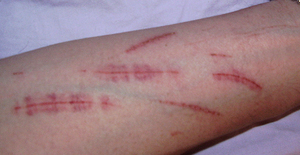Ever bought a large item and then returned it? Maybe you didn’t like it, so you lied and said it was broken. Or maybe it was broken. But the break was easy to fix, you just didn’t feel like it. Ever thought about where that item goes? Well, back to the factory, of course! There, the great manufacturers, who have already paid the shipping to get it shipped back, are going to use their money to fix it and pay to have it sent back to another retailer. How nice of them. Well, I am sick of big business pulling the wool over people’s eyes. This is the real story of where these returned items go.
I will use some specific companies as an example, having experienced this personally. I worked at Lowe’s, but don’t think they are the only people who do this. At one point, a person returned a Kobalt brand air compressor that had a leak. This leak was fairly easy to fix, and probably wouldn’t even involve welding. It was an exposed section of pipe, so it would have only taken 30 minutes. It was a $300 air compressor, and I thought that since it was broken, I might be able to get a discount on it. I was told to go ask about it from our manager that deals with these defective items. I arrived just before I saw it go straight into what? Going into a truck taking it back to be fixed? No. It was going straight into a trash compactor. $300 worth of metal, rubber, and plastic wasted because of a pin sized hole. After I began to inquire, I found out the details of what happens and why.
The manufacturer doesn’t want to ship the item back and forth because then their money would leave their pockets. However, Lowe’s has only paid for one item. So the manufacturer cannot send them another item to replace it, because then people like me could buy and fix the other, and now the manufacturer has given me a free item. So now, the manufacturer has “wasted” the cost of the item. So the retailer contacts the manufacturer, and the manufacturer agrees to send them a new one. However, as I mentioned before, that would put two items on the market for which only one has been paid. So the manufacturer makes a contract with the retailer that states that the manufacturer will send a new product to replace the old one upon destruction of the old. This whole process really makes sense until you think about how much is wasted. When I started to ask around to other employees who had seen other things thrown away, I was astonished. They had seen not only air compressors, but lumber, shingles, nail guns, and even lawnmowers. That’s right, lawnmowers. One particular employee even knew how much was put in. The money put into that compactor that is wasted is easily enough to build 3-4 houses. That’s 3-4 people that did not have a roof over their head that could be sheltered. Keep in mind that the store at which I worked was only an average sized store. Other places could waste even more.
Next time you think about returning a fairly large item that could be easily fixed, just remember what could happen to it. Also, do whatever you can to stop this waste. Thousands of people could put some of these items to good use, or at least the company could be forced to fix them. We really need to force the retailer, the manufacturer, or both to do something about this waste.


